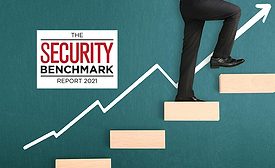Security Talk Column
Security Talk
Businesses need to evaluate how they manage their physical risks to avoid the next improbable event that could have devastating consequences to an organization’s continuity and bottom line.
Read More
Security Talk
Security at scale: Growing a security program regardless of headcount, size or budget
Whether your security program is a team of one or 101, scaling a security program to grow with the security function and its responsibilities takes thought and consideration.
June 6, 2022
Security Talk
The super power of soft skills in security
Success in the security industry is made easier by possessing a number of soft skills. Security leaders advise embodying these character traits yourself and looking for these soft skills when hiring.
May 9, 2022
Security Talk
Critical infrastructure: The critical industry everyone must protect
October 4, 2021
Sign-up to receive top management & result-driven techniques in the industry.
Join over 20,000+ industry leaders who receive our premium content.
SIGN UP TODAY!Copyright ©2025. All Rights Reserved BNP Media.
Design, CMS, Hosting & Web Development :: ePublishing










